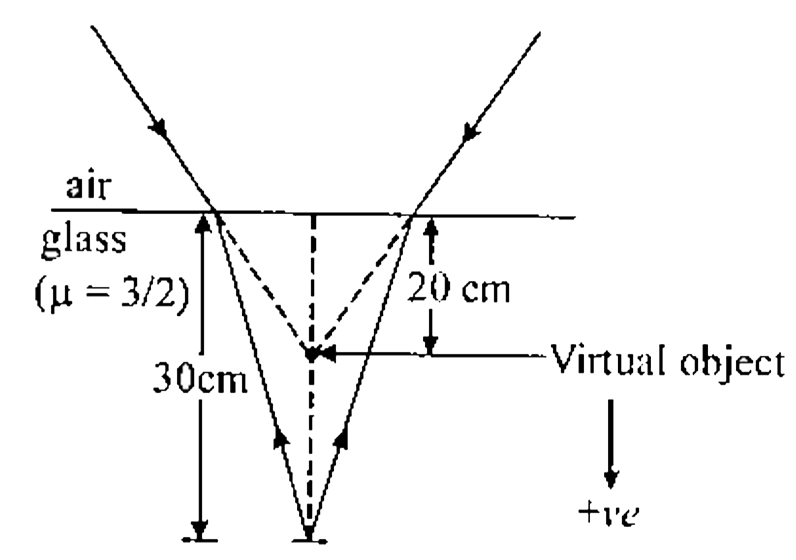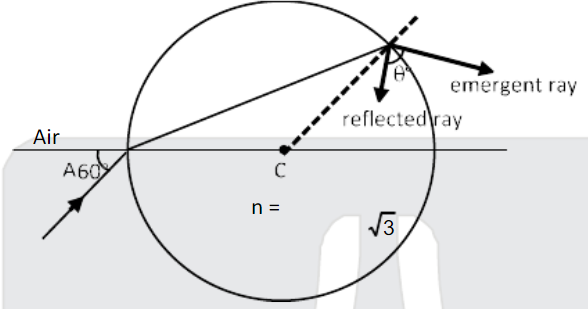A spherical air bubble is embedded in glass, and a ray of light ( incident ray I) approaches the bubble as shown in the figure. Which of the following represent the refracted ray which passes through the bubble completely?

A
A
B
B
C
C
D
D
Text Solution
The correct Answer is:A
|
Updated on:21/07/2023
Similar Questions
Knowledge Check
- Question 1 - Select One or More
A ray of light is incident in situation as shown in figure.
_S01_055_Q01.png)
Which of the following statements is/are true?AIf μ2=3.2 then the angle of deviation is zeroBIf μ2=2.8 then the angle of deviation is 60∘CIf μ2=1.8 then the angle of deviation is 120∘DIf μ2=1.8 then the angle of deviation is 60∘ - Question 2 - Select One
A spherical air bubble is embedded in a piece of glass. For a
ray of light passing through the bubble, it behaves like aAa converging lensBb diverging lensCc plano-converging lensDd plano-diverging len - Question 3 - Select One
A ray of light is incident on a parallel-sided glass slab as shown in the figure. The angle of refraction for this ray of light is likely to be :
 A60∘B33∘C57∘D30∘
A60∘B33∘C57∘D30∘
A converging beam of light rays incident on a glasa-air interface as shown in figure. Find where these rays will meet after refraction.
 View Solution
View SolutionA ray of light is incident normally on a plane glass slab. What will be (i) the angle of refraction, and (ii) the angle of deviation for the ray ?
View SolutionHow many refractions does a ray of light undergo on passing through a glass slab? What is the net deviation of the ray ?
View SolutionLight incidence on a sphere of refractive index √3 placed in a air as shown in Figure. Find the angle (θ)in degree between emergent ray and reflected ray.
 View Solution
View SolutionRays of light get refracted while passing from air to glass
becauseView Solution

